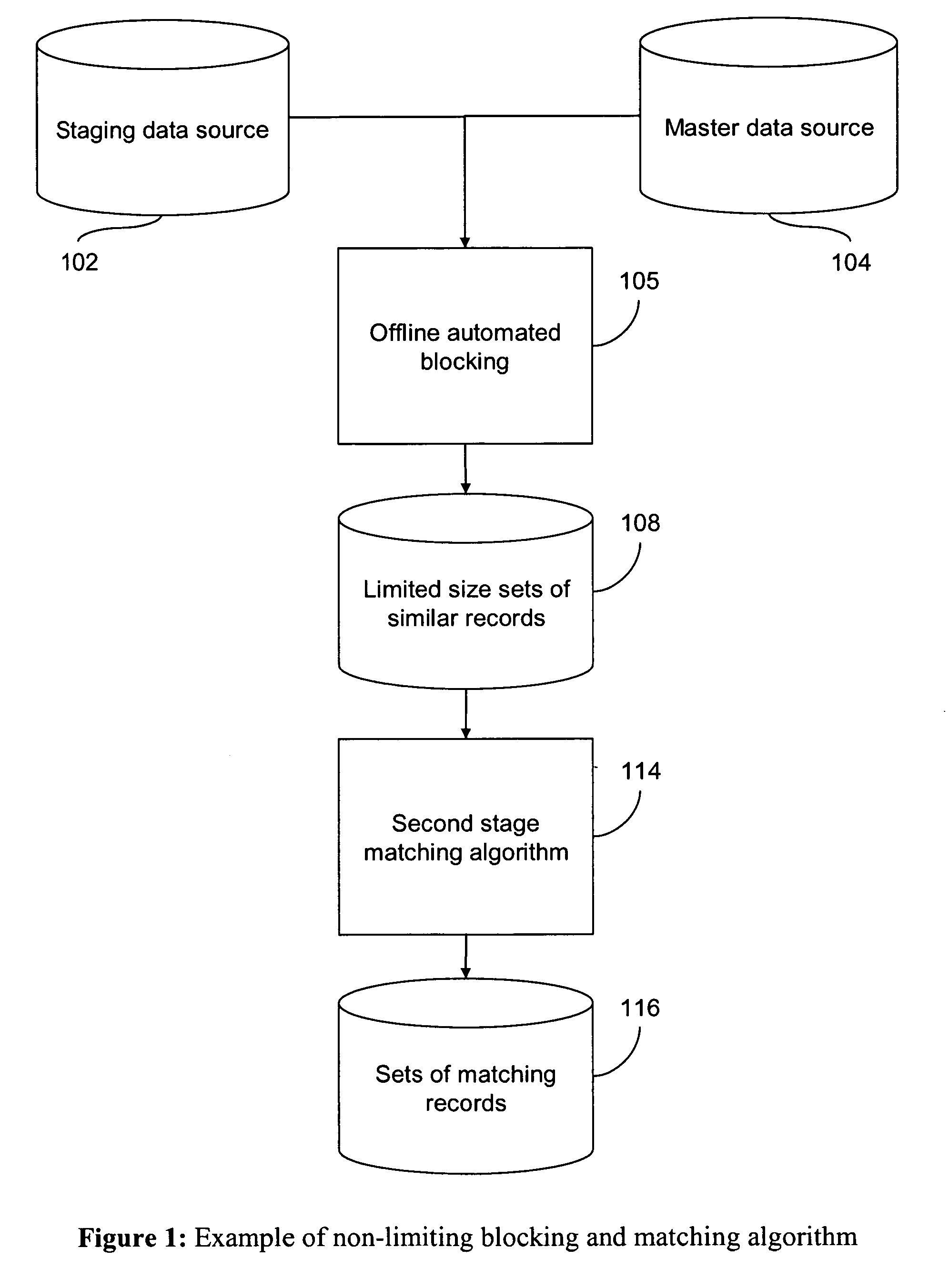Batch automated blocking and record matching
a technology of automatic blocking and record matching, applied in the field of record matching, can solve the problems of more detailed, more computationally expensive matching process, and increased complexity of brute force approach, and achieve the effect of speeding up the downstream data retrieval and scoring, and minimizing the number of missed matches
- Summary
- Abstract
- Description
- Claims
- Application Information
AI Technical Summary
Benefits of technology
Problems solved by technology
Method used
Image
Examples
example usage
[0055]The exemplary illustrative offline blocking inputs some configuration information and data and outputs blocks containing records that might match.
example input
[0056]The exemplary illustrative offline blocking reads one or two data sources.
example ‘
[0057]Blocking can match data representing anything, such as people, transactions, addresses or corporations. We call the thing that blocking matches the record. This reflects our preference for the terminology of the data quality community where the literature refers to the broad problem we are trying to solve as “record matching” as opposed to the terminology of the database community which uses the term “record” to refer to an entry in a single database table. In this document, we use the term “row” to describe an individual table entry. The information describing a record may be spread across multiple files or tables. See FIG. 2.
PUM
 Login to View More
Login to View More Abstract
Description
Claims
Application Information
 Login to View More
Login to View More - R&D
- Intellectual Property
- Life Sciences
- Materials
- Tech Scout
- Unparalleled Data Quality
- Higher Quality Content
- 60% Fewer Hallucinations
Browse by: Latest US Patents, China's latest patents, Technical Efficacy Thesaurus, Application Domain, Technology Topic, Popular Technical Reports.
© 2025 PatSnap. All rights reserved.Legal|Privacy policy|Modern Slavery Act Transparency Statement|Sitemap|About US| Contact US: help@patsnap.com



